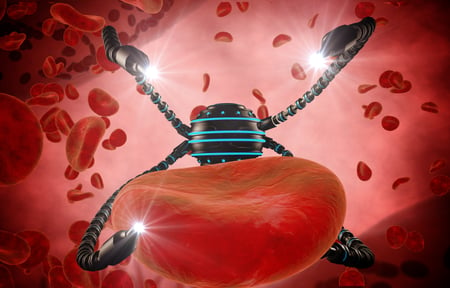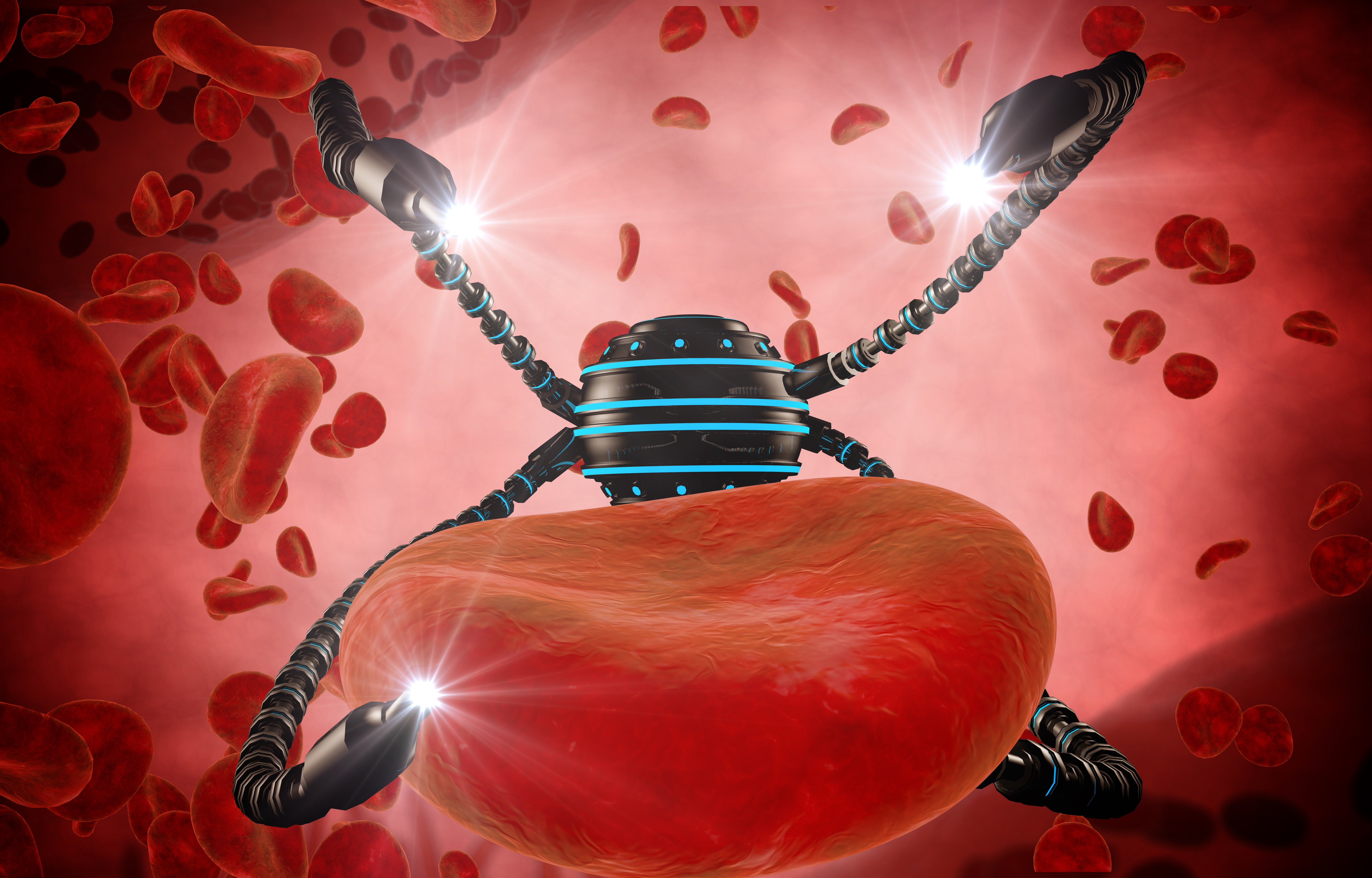Legendary physicist Richard Feynman, in his 1959 lecture ‘There’s plenty of room at the bottom’, imagined a future where autonomous robots could operate inside the body – where you could, in his words, ‘swallow the surgeon’. Whilst we’re not there just yet, in recent years we’ve witnessed some truly remarkable advances in medical nanorobotics. With this in mind, we thought we’d share three of our favourite recent advances in nanomedicine with potentially game-changing implications for administering targeted drug treatments.

Image: Pavel Chagochkin/Shutterstock.com
Remote controlled ‘nanofish’
Last month, Chinese and US scientists unveiled a nano-sized, remote controlled ‘fish’, capable of swimming through bodily fluids when a magnetic field is applied. The robot, 100 times smaller than a grain of sand, uses a physiologically-inspired method of propulsion very different to the rotating corkscrew-tailed approach employed by bacterial based nanobots.
The nanobot consists of gold ‘head’ and ‘tail’ segments, each approximately 800 nm in length, joined to a nickel body by silver hinges. The device moves by mimicking the motion of real fish. Upon application of an oscillating magnetic field, the head and tail segments swing from side to side, pushing the tiny robot forwards. Direction and speed of travel can be controlled by the location and rate of oscillation of the magnet.
It’s thought that the device could be used to swim through the body’s circulatory system to carry drugs to their targets, avoiding the need for less targeted therapies that often cause harm to healthy tissue. The team are also working on a biodegradable version that disintegrates after completing the job.
Cancer-fighting bacteria that zero-in on tumours
Staying with the theme of remote controlled drug delivery, Canadian scientists have recently shown that swarms of bacteria carrying potent anti-cancer therapeutics and capable of sensing magnetic fields can be coerced into dispatching their toxic payloads in the hard-to-reach parts of tumours, leaving healthy tissues unaffected.
Delivering therapeutics to a tumour’s centre is a challenging task. In the body, rapidly developing cancers soon outgrow their available blood supply, leaving their innermost cells deprived of oxygen and nutrients – forming what’s known as a hypoxic core. It’s this oxygen and closely related pH gradient that is believed to be one of the key factors that make tumours so resistant to traditional drug treatment.
To combat this, the researchers at McGill University used deep-sea dwelling Magnetococcus marinus bacteria, capable of producing magnetosomes (membrane-enclosed structures containing magnetite crystals) from environmental iron. In nature, the bacteria use their magnetosomes just like compass needles to align with the Earth’s magnetic field and navigate to ocean depths where the lower oxygen levels suit them.
By incorporating an anti-cancer drug into liposomes attached to the bacteria, the team used a local magnetic field to guide the injected bacteria to tumours in mice. Once there, the strain’s tendency to seek out oxygen-deprived regions meant that the microbes headed straight for the hypoxic core of the tumour, where they were able to release their therapeutic payload.
Whilst the overall efficacy of the approach was not tested, the fact that the bacteria did not elicit an immune response was a positive sign demonstrating the approach’s therapeutic potential.
Brainwave-powered nanobot releases drugs inside a cockroach
In marketing, much is made of the power of persuasion. Taking this concept a step further, scientists in Israel have for the first time used human thought alone to instruct nanobots to release a cargo of dummy drugs inside a living creature.
Shaped like clam shells, the nanoscale robots consist of strands of synthetic DNA that encapsulate a drug (or in this case, a fluorescent marker) until it’s ready for delivery. The opening of the shell is controlled using iron oxide nanoparticles attached to each side of the nanobot like the clasp on a purse. When a magnetic field is applied, the nanoparticles gently heat, causing the DNA container to open and the drug to be exposed. As the drug is tethered to the inside of the DNA shell, it can only be accessed when the shell is open. What’s more, nanobot activation is reversible, meaning drug delivery can be switched on and off on command.
To demonstrate the approach, the team used a three-step process. First, they injected DNA nanobots containing the fluorescent reporter system into a cockroach, which was then placed inside an electromagnetic coil. Next, in order to control the activation of the coil (and thus the nanobots), the team trained an algorithm to distinguish between the EEG patterns of people at rest and those performing vigorous mental arithmetic.
Finally, a human wearing an EEG cap connected to the coil was prompted to take a maths test. Within 18 seconds of the coil being activated, fluorescence was detected inside the cockroach. When the participant was told to relax, the fluorescence ceased, indicating the nanobots had successfully deactivated and the DNA container had closed (ceasing expression of the reporter protein).
The creators of the mind-blowing technology hope it could eventually be used to trigger drug release in patients with illnesses involving changes in brain activity, such as ADHD or depression.
Want to read about more fascinating life science research?
Developments in biotechnology are pushing the limits of what’s possible in a wide range of fields, from medical devices and diagnostic testing through to agrichem and pharma. To keep on top of the latest trends and discoveries, sign up to our monthly newsletter.





